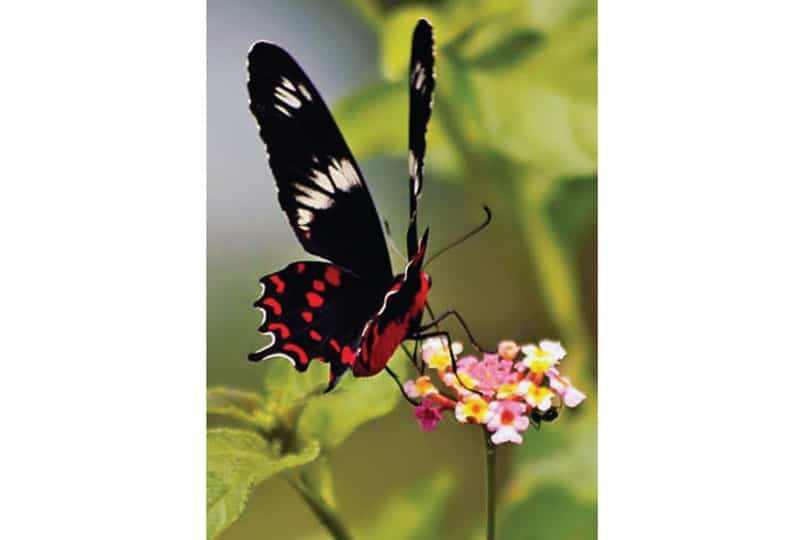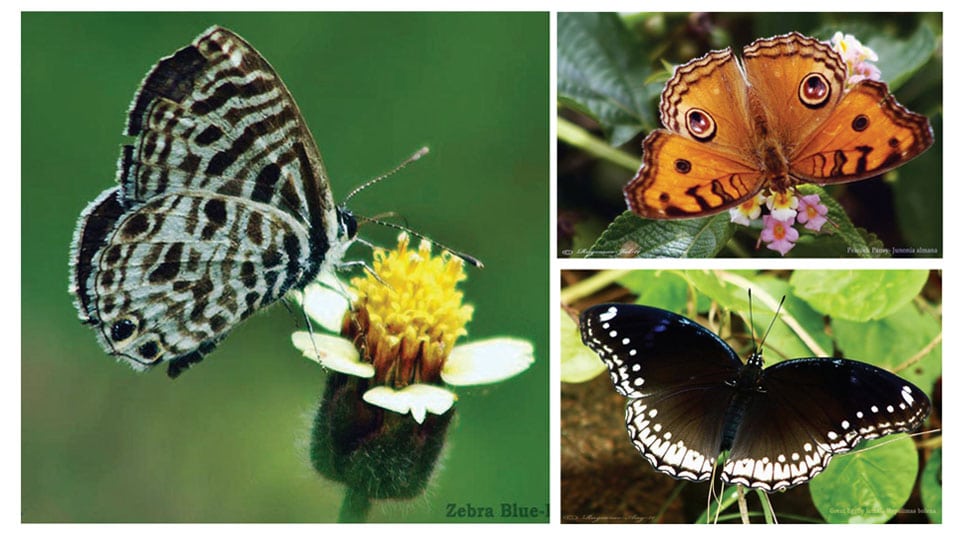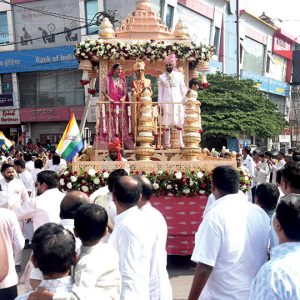Things are changing, some not for the better. Life-supportive native plants are being replaced by exotic varieties. Some harmful, some beneficial while some really degrade the ecosystem. Felling of trees is not the only habitat destruction; planting wrong species is the more harmful act of habitat degradation. Small native shrubs and grasses which are life-sustaining to butterflies should be protected at least in some pockets for these winged wonders to survive.
By Ragoo Rao, Ethologist
Come spring, with fresh sprout of leaves, fresh flower buds bloom and birds sing. There comes a variety of butterflies that are attracted to flowers. Not any flower as they have their own preferences. Butterflies choose an ecosystem developed by natural selection, adapting and acclimatising to the weather, altitude and climate. Flora and fauna of the region are interdependent for their growth and survival.
Butterflies are a part of this ecosystem and a vital link in the lifecycle of plants. They need flowers of their choice and plants to support their very existence — to lay eggs, food for larvae and caterpillar, shelter for the dormant pupa or chrysalis to emerge as a butterfly.

India’s biodiversity allows a vast number of butterfly species to thrive. There are approximately 1,800 species of butterflies found here of which almost 20 percent are endemic to this country. Karnataka has about 318 species in the Western Ghats of Kodagu that supports nearly two-thirds of the total species. Some so fascinating and beautiful, they are called “Flying Jewels of Western Ghats.”
Mysuru has close to 200 species. We should be proud to have the smallest Indian butterfly, the Oriental Grass Jewel — Freyeria Putli, with a small wing-span of only 15-20 mm, and the largest Indian butterfly — second largest in the World, the Southern Birdwing — Troidesminos, with a spread wing span of 140-190 mm. The second smallest butterfly in India is the Tiny Grass Blue — Zizulahylax which is hardly a centimetre across is also in Mysuru.

Mysuru being so rich in its flora and fauna is a very congenial region for butterflies. Things are changing, some not for the better. Life-supportive native plants are being replaced by exotic varieties. Some harmful, some beneficial while some really degrade the ecosystem. Felling of trees is not the only habitat destruction; planting wrong species is — with short-sighted plans — more harmful act of habitat degradation.
Small native shrubs and grasses which are life-sustaining to butterflies should be protected at least in some pockets. In many parts of the world, after realising the consequences of wrong plantations, priority is given to the native plants used creatively to keep up the ecosystem intact and also beautify the place. We should follow this practice for these winged wonders to survive.
e-mail: [email protected]








Recent Comments